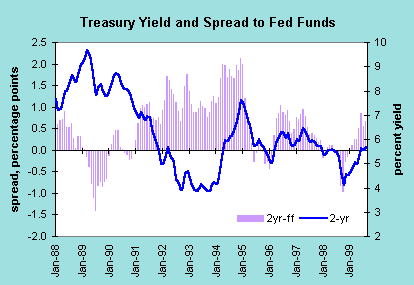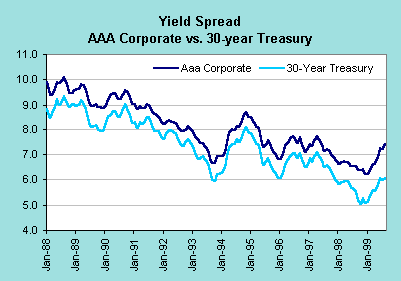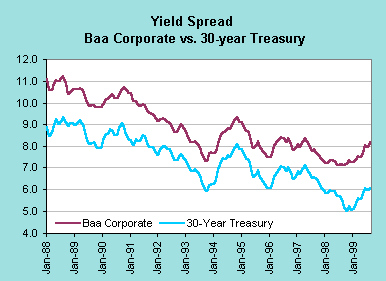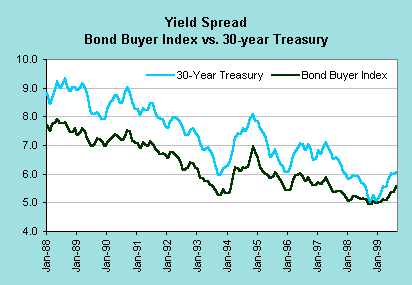By Evelina M. Tainer, Chief Economist
INDICATORS OF INFLATION
FEDERAL RESERVE POLICY
INTEREST RATES
STOCK PRICES

Often, one can get a sense of market expectations by looking at the spread between the 2-year note and the fed funds rate. When the spread narrows, or even turns negative, it means that market participants expect the Fed to ease monetary policy. When the spread widens, market participants are looking for tighter monetary policy.

The spread between long and short interest rates tends to widen around economic downturns and narrows during recovery/expansion.

The wider spread between the risk-free Treasury bond and the AAA Corporate in the past year does not suggest a worsening of credit conditions. Rather, it reflects the reduced supply of Treasury securities as the government is on the verge of recording its second straight federal budget surplus. The Treasury has reduced the supply of securities for the second straight year.

Note that the spread between the Baa Corporate and the 30-year Treasury bond is wider than the spread between the AAA Corporate and the T-bond. This does reflect market views of credit conditions among these lower rated corporate bonds.

Yields on municipal bonds are less than Treasury bonds because the interest earned is exempt from federal income tax. The spread has widened from its lows -- but still remain more narrow than the historical average.